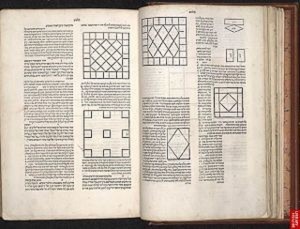From Pharisees to Rabbis
 Lawrence H. Schiffman, From Text to Tradition, Ktav Publishing House, Hoboken, NJ, 1991.
Lawrence H. Schiffman, From Text to Tradition, Ktav Publishing House, Hoboken, NJ, 1991.
Inherent in the later traditions, and indeed, in most modern scholarly treatments, is the assumption that the Pharisees bequeathed their traditions to the tannaim. The terms “Pharisees” and “tannaim” overlap chronologically. We speak of Pharisaic Judaism as emerging in the early Hasmonean period, around 150 B.C.E., and continuing up to the destruction of the Temple in 70 C.E., when it was succeeded by tannaitic Judaism. Yet the transition was not an immediate, sudden break. In order to understand how the development from Pharisees to tannaim took place, we must ask what typified the Pharisee and what typified the tanna. In what ways were they the same, and in what ways
were they different?
The Pharisees were lay sages of the Torah who were only informally organized. Even before the days of the preeminent sages Hillel and Shammai, the Pharisees had made the transition from being a political force in the Hasmonean coalition to being a group of religious leaders, loosely joined together by the same interpretation of Judaism, who sought to teach their approach to the people at large. They did not see the collection, arrangement, or passing on of traditions as their function, nor were they an organized bureaucracy.
The tannaim, on the other hand, involved themselves in the systematic collection and transmission of traditions, and their efforts eventually culminated in the redaction of the Mishnah. (The very name tanna is Aramaic for a memorizer and reciter of traditions.) The tannaim belonged to schools (sometimes called academies) that were more formalized than those of the earlier Pharisees, and they sought to expand and to organize them.
A final, fundamental difference has to do with the concept of an oral law. Pharisaism traced its nonbiblical legal and exegetical traditions to the tradition of the fathers” or “unwritten laws.” Yet nowhere do we find the Pharisees asserting that these traditions came from Sinai. The tannaim, as we will soon see, asserted that their extrabiblical traditions, many of them inherited from the Pharisees, were part of the oral law, a second Torah given by God to Moses at Sinai along with the written law.
The evolution from the era of the Pharisees to that of the tannaim, like the later transition from tannaim to amoraim (the teachers of the Talmud [Gemara], ca. 200–500 C.E.), required time to allow for the necessary innovations as well as for organic development. Various external causes helped to foster the change. The desire to gather traditions and standardize Judaism was brought about by the Great Revolt of 66–73 C.E. and by the notion that the defeat was partly the result of the sectarian strife that had plagued the Jewish people in the years leading up to the revolt and even during the war. The tendency toward more organized schools replacing the informal circles of Pharisaic times was encouraged to some extent by the new status which the tannaitic academy was granted by the Roman overlords. The rise of a bureaucracy and the role of tannaim as judges throughout the land resulted from the new political situation. Finally, the desire to collect and preserve traditions is always strengthened in periods after wars and catastrophes, a pattern which can be observed repeatedly in the ancient Near East.



